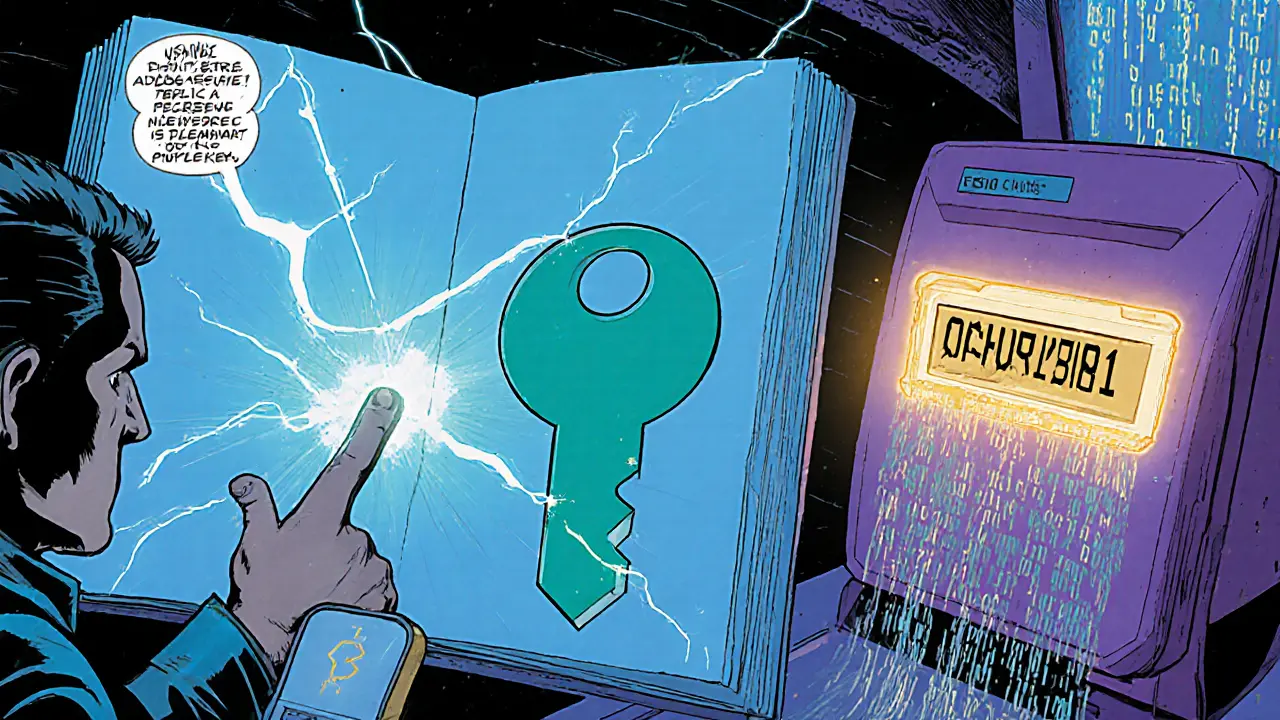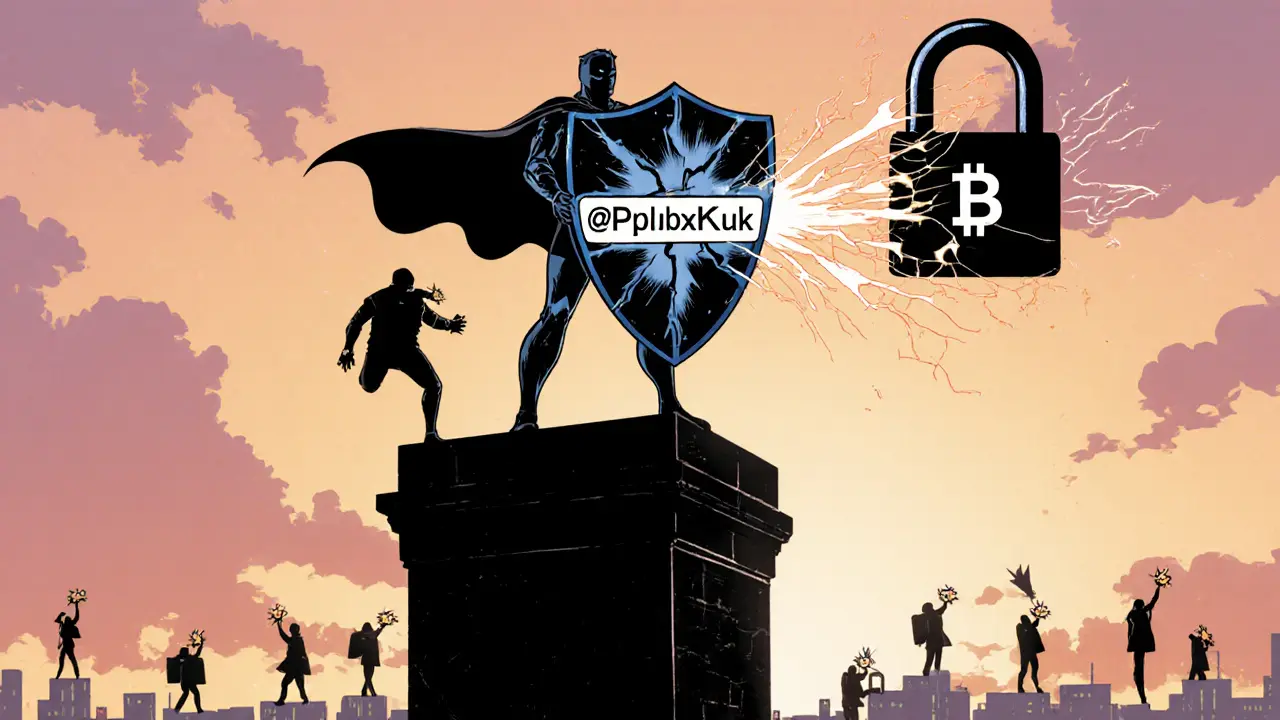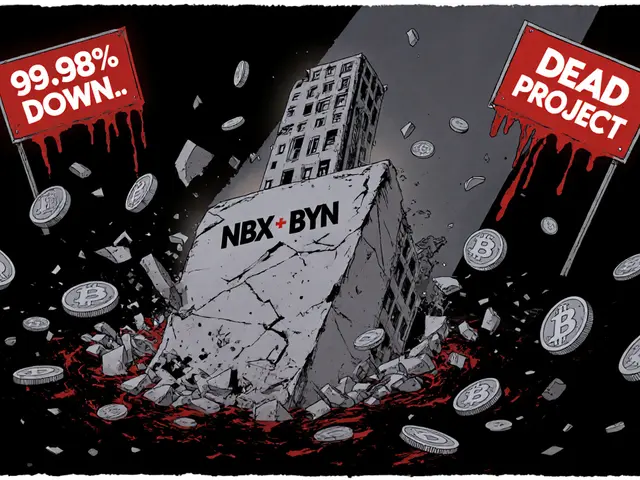Understanding How Keys Generate Blockchain Addresses
Blockchain Key Generation Visualizer
This interactive tool visualizes how a private key is transformed through cryptographic processes into a public key, then into a wallet address. Each step represents a real cryptographic transformation used in blockchain systems.
Step 1: Private Key
A 256-bit random number that acts as your secret password. Never share this!
Step 2: Public Key
Derived from the private key using elliptic-curve multiplication (SECP256k1). This is safe to share publicly.
Step 3: Address
Created by hashing the public key and encoding it in Base58Check or Bech32 format for human readability.
How It Works
Each step in the process is a one-way mathematical transformation:
Why This Matters: The one-way nature of these transformations ensures that even if someone sees your public key or address, they cannot reverse-engineer your private key. This is what makes blockchain security possible.
When you hear people talk about cryptographic keys - the secret numbers that let you own and move digital money - you probably wonder how they turn into the readable strings you copy‑paste into a wallet. This article breaks down the math and the steps that link a private key, a public key, an extended key, and finally a wallet address, so you can see why losing one piece means losing control of your funds.
Private Key: The Secret Password of a Wallet
Private key is a 256‑bit random number generated by a secure source of entropy. It lives only on your device and must never be shared. In Bitcoin, Ethereum and most other chains the private key is the sole credential that can produce a valid digital signature for any transaction spending coins locked to the corresponding public key.
Public Key: The Public Identifier Derived from the Private Key
From that secret number, the blockchain protocol runs an elliptic‑curve multiplication (the SECP256k1 curve for Bitcoin) to produce a public key a long alphanumeric string that can be safely shared. The operation is one‑way: anyone can compute the public key from the private key, but reversing the process (finding the private key given a public key) would require solving a discrete‑logarithm problem that is astronomically hard.
Address: Human‑Friendly Encoding of the Public Key
Most users never see the raw public key. Wallet software hashes it (usually with SHA‑256 followed by RIPEMD‑160) and then encodes the result in Base58Check or Bech32, producing an address a short, typo‑resistant string like 1A1zP1eP5QGefi2DMPTfTL5SLmv7DivfNa. When you send coins, you actually lock them to the public key; the address is just a convenient label that anyone can use to point to that lock.
Extended Public Keys (xPub) and Hierarchical Deterministic (HD) Wallets
Modern wallets follow BIP‑32, BIP‑44, or BIP‑49 standards that let a single master seed generate a whole tree of keys. The seed-often expressed as a 12‑ or 24‑word recovery seed or mnemonic phrase that can recreate every private key in the wallet-is fed into a key‑derivation function (HKDF). From the master private key the wallet can derive an extended public key (xPub) a public‑only node that can generate all child public keys without ever exposing private material. This is why you can give a watch‑only wallet an xPub and let it monitor balances without ever having the ability to spend them.

Digital Signatures: Proving Ownership Without Revealing Secrets
When you want to spend coins, your wallet creates a digital signature a cryptographic proof that the transaction was authorized by the holder of the private key. The signature combines the transaction hash with the private key. Validators on the network take the supplied public key, verify the signature against the transaction data, and if it matches they consider the transaction valid. The private key never leaves your device, yet the network gains assurance that only the rightful owner could have signed.
Security Considerations: What Can Go Wrong?
The entire system hinges on keeping the private key, seed, and passphrase secret. If an attacker obtains any of those values, they gain full control of every address derived from that seed. On the other side, losing the seed means you permanently lose access. Best practices include:
- Generate keys offline on a hardware wallet or air‑gapped computer.
- Store the recovery seed on durable media (metal seed plates, waterproof paper).
- Never back up a private key or seed to cloud storage or plain‑text files.
- Use a strong, unique passphrase to encrypt the seed if you must store it digitally.
Because the key space is ~2256, brute‑forcing a private key would take longer than the age of the universe even with future quantum computers, unless the underlying curves are replaced with quantum‑resistant algorithms.
Practical Walk‑Through: From Seed to First Transaction
- Write down a 12‑word recovery seed generated by your hardware wallet.
- The wallet uses the seed to derive a master private key (m) and a master public key (M).
- From M it derives an xPub for the first account (m/44'/0'/0').
- The xPub generates a public key for the first receiving address (m/44'/0'/0'/0/0).
- The public key is hashed and encoded, giving you an address like
bc1qw508d6qejxtdg4y5r3zarvary0c5xw7kygt080. - You share that address with a sender. The sender locks bitcoins to the underlying public key.
- When you want to spend, the wallet signs the spend transaction with the private key at m/44'/0'/0'/0/0, producing a digital signature.
- Network nodes verify the signature against the public key, confirm the spend, and update the ledger.
This flow shows how a single secret phrase can control unlimited addresses while keeping the public view transparent and safe.
Key vs. Address: Quick Reference Table
| Element | Type | Visibility | Primary Purpose |
|---|---|---|---|
| Private key | Secret 256‑bit number | Never shared | Creates signatures & derives public keys |
| Public key | 58‑character (hex) string | Publicly shareable | Identifies ownership; source of address |
| Address | Base58Check / Bech32 string | Publicly shareable | Human‑readable destination for funds |
| xPub (Extended Public Key) | Extended key string | Public (watch‑only) or private | Derives many public keys without exposing private keys |

Frequently Asked Questions
Frequently Asked Questions
Can I reuse the same address for multiple transactions?
Technically you can, but best practice is to generate a fresh address for each incoming payment. Reusing addresses links transactions together, reducing privacy.
What happens if I lose my private key but still have the recovery seed?
You can restore the entire wallet, including all private keys and addresses, by feeding the seed into a compatible HD wallet. The seed is the master secret.
Is an xPub enough to spend funds?
No. An xPub only lets you derive public keys and addresses. To sign a transaction you need the corresponding private key, which is not contained in the xPub.
How does a digital signature prove ownership without revealing the private key?
The signature is created by mathematically combining the transaction hash with the private key. Verifiers use the public key to check that the signature could only have been generated by the matching private key, yet the private key itself is never transmitted.
Are blockchain addresses the same across all cryptocurrencies?
No. Each blockchain defines its own address format and checksum algorithm. Bitcoin uses Base58Check or Bech32, Ethereum uses 0x‑prefixed hex, XRP uses a base‑58 algorithm with a different prefix.






21 Comments
katie littlewood
April 24 2025Delving into the world of cryptographic key generation feels like unwrapping a layered mystery where each step builds upon the last, creating a tapestry of mathematical elegance. The private key, a 256‑bit random number, is generated with stringent entropy sources to ensure true randomness, and it sits at the very heart of your wallet’s security. From this secret seed, the elliptic‑curve multiplication on the SECP256k1 curve produces a public key, a process that is computationally easy in one direction yet astronomically hard to reverse, embodying the one‑way function principle. The public key, once derived, is then subjected to a double‑hashing routine-first SHA‑256, then RIPEMD‑160-compressing the data into a concise fingerprint. This fingerprint is finally encoded using Base58Check or Bech32, yielding the familiar human‑readable address that we copy‑paste into exchanges and wallets. Every transformation in this chain is deliberately irreversible, protecting your private key even if the public key or address is exposed to the world. The beauty of this design lies in its simplicity: a single secret can generate an almost infinite number of addresses, each isolated from the others in terms of privacy. Hierarchical Deterministic (HD) wallets extend this concept, allowing a master seed to spawn a tree of child keys without ever revealing the master private key, which is why watch‑only wallets can monitor balances safely. Remember, the private key must never leave the secure confines of your hardware or air‑gapped device; even a fleeting copy in plain text can become a ticket for theft. Conversely, losing the seed phrase is equally catastrophic, as it is the master key to resurrect all derived keys. To mitigate these risks, many users store their seed on metal plates, use multi‑signature setups, or employ hardware wallets that keep the private key isolated from any internet‑connected environment. While quantum‑resistant algorithms are still on the horizon, the current elliptic‑curve cryptography remains secure against any realistic brute‑force attempts, given the sheer size of the key space. Ultimately, understanding each step-from random number generation to address encoding-empowers you to make informed decisions about wallet security and best practices. So, the next time you glance at a cryptic string of characters, know that it represents a sophisticated cascade of math designed to keep your digital assets safe.
Stefano Benny
April 29 2025Keys are sexy, bro 😎
Bobby Ferew
May 3 2025I feel a strange comforting aura when I think about the private key, like a quiet guardian watching over my digital vault. The way the public key emerges from the private one is almost poetic, a silent handshake that the universe approves. Even though I never reveal my private key, I can’t help but feel a subtle connection to every address I own. The whole process feels like a gentle cascade, each step flowing naturally into the next.
Mark Camden
May 8 2025It is paramount for any conscientious individual to recognize the moral imperative of safeguarding the private key, as its compromise constitutes a breach of personal autonomy. One must eschew the temptation to store secret material in cloud repositories, for that would be an act of intellectual negligence. Furthermore, the dissemination of the public key is entirely permissible, yet the address should be treated with the same respect as a physical mailing address. In sum, the ethical stewardship of cryptographic assets demands unwavering vigilance.
Evie View
May 12 2025Listen, if you think you can just jot down a private key on a sticky note and call it safe, you’re living in a fantasy. The moment anyone gets a glimpse of that number, your entire portfolio is as good as gone-no second chances. You need to armor that seed like it’s the crown jewels, otherwise you’ll be crying over spilled coins. Stop being careless and start treating your keys like they’re worth their weight in gold.
Sidharth Praveen
May 17 2025Great breakdown! Just remember to generate your seed offline whenever possible. Using a hardware wallet can keep the private key sealed away from any internet‑connected device.
Sophie Sturdevant
May 22 2025Loving the detail on HD wallets. The xPub is a fantastic tool for creating watch‑only accounts without exposing any spendable keys.
Jan B.
May 26 2025Well explained. Keep your seed secure and never share it.
MARLIN RIVERA
May 31 2025The article glosses over the computational complexity of elliptic‑curve multiplication, which is non‑trivial and warrants a deeper dive. Moreover, the simplifications in the JavaScript demo could mislead novices into underestimating security considerations.
Debby Haime
June 5 2025Don’t forget to encrypt your seed if you ever store it digitally; a strong passphrase can add a vital layer of protection.
emmanuel omari
June 9 2025From a national perspective, embracing blockchain technology can bolster economic sovereignty, but only if citizens grasp the fundamentals of key management. Ignorance is the greatest vulnerability, and it will not be tolerated in a future digital economy.
Andy Cox
June 14 2025The visualizer is a neat tool, though real‑world key generation involves hardware entropy sources that can’t be fully simulated in a browser.
Courtney Winq-Microblading
June 18 2025Key generation is like an alchemical process, turning randomness into order, and then encoding that order into a form we can all understand.
Parker Dixon
June 23 2025Spot on! 🌟 Knowing how each step works makes me feel more confident in trusting my wallet. Keep the education coming! 🚀
Somesh Nikam
June 28 2025Your explanation of seed‑to‑address derivation is accurate; ensure you also back up the mnemonic securely.
Jenae Lawler
July 2 2025While the exposition is thorough, one might argue that the focus on Bitcoin's specifics neglects the diverse methodologies employed by other blockchain ecosystems.
Chad Fraser
July 7 2025True that! Different chains have their own quirks, but the core idea of one‑way functions stays the same. Let’s keep learning together!
Jayne McCann
July 12 2025It’s all just numbers, isn’t it?
Richard Herman
July 16 2025Numbers, sure, but those numbers protect real value. Understanding them is key.
celester Johnson
July 21 2025If you truly grasp the philosophical implications of cryptographic immutability, you’ll see that every address is a tiny monument to trustlessness, a testament to human ingenuity that transcends mere code.
Prince Chaudhary
July 26 2025Exactly! Let that monument inspire you to safeguard every seed, because each one is a personal legacy.